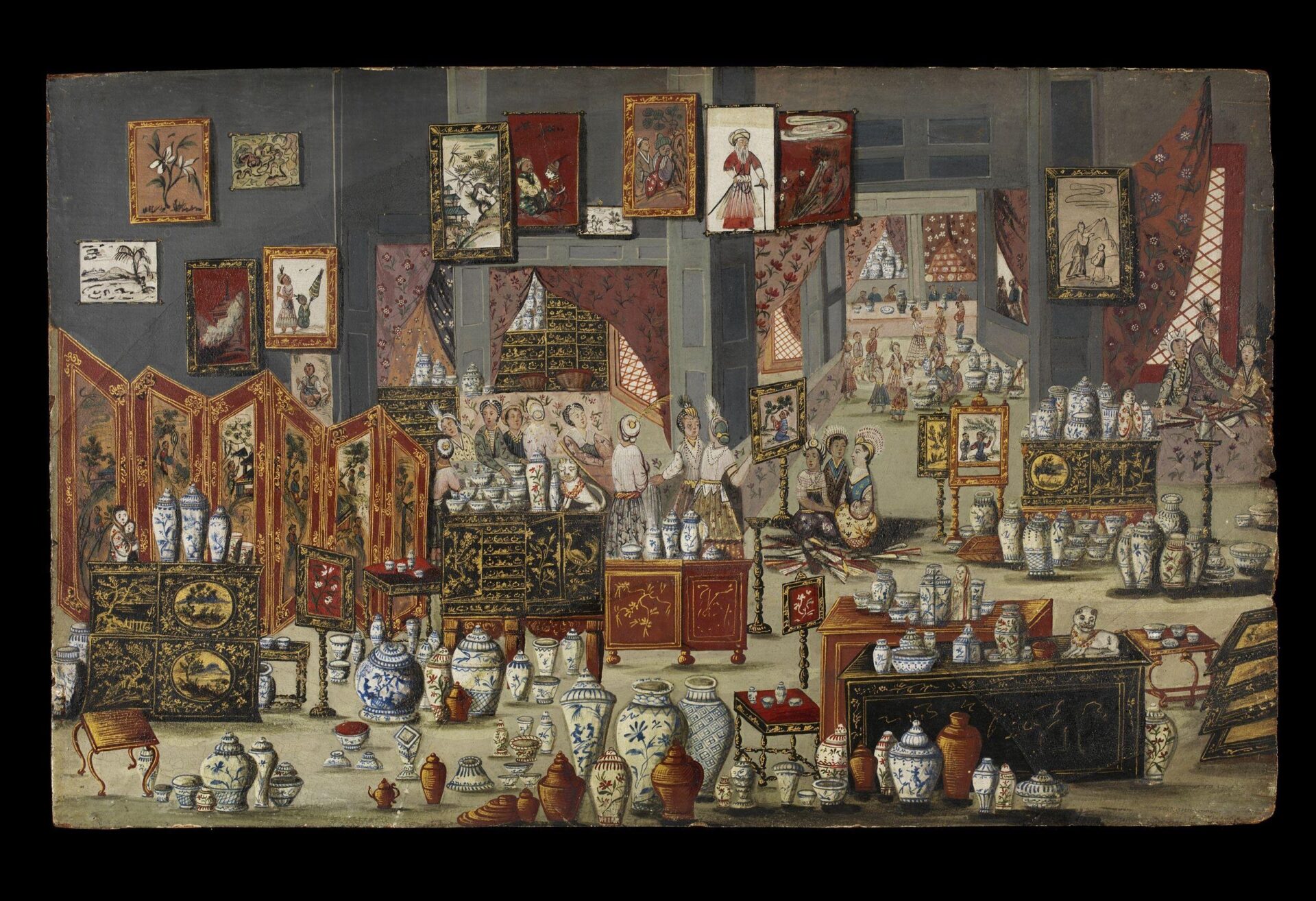Panellists Prof Giorgio Riello (EUI), Ana Struillou (EUI), Dr Emily Bartlett (Kent), Prof Jennie Batchelor (Kent) and Prof Ellen Swift (Kent) joined Chair Dr Suzanna Ivanič to discuss material culture and history. What is the state of the field of 'history and material culture'? Where are we in the 'material turn'? Is there more to do?
Material culture studies is still very much alive and respondent to being reinvigorated by different disciplines and new concerns within history. Individual historians cannot seek to encompass it all, but tend to carve out their own particular perspectives, such as in textiles [GR, JB]. This makes it a vibrant field and its adaptability and its interdisciplinarity mean it shows no signs of decline. For young scholars it still holds allure. The global dimension continues to provide new avenues of research [AS], as does new integration with the history of emotion [EB], and the ability to put us ‘in touch’ with the past is still as enchanting as ever. In a world where public history is becoming more important, it holds obvious advantages. What seems ever more pressing, is that even more must be done to embed the interdisciplinarity of the field, train scholars in the different skills required, and foster conversations with curators and conservators [GR].
The field is now so well integrated into historical approaches that rather than considering it as a separate field with its internal questions, it can enter centre stage in continuous dialogue with histories of religion, histories of science and histories of art etc. There is no need to argue for it, but rather to continue to take charge of its strengths (and weaknesses) and develop a literature that consciously acknowledges them.
An important shift in methodology is discernible. Finding particular schemes to carry out research (such as older art historical description or modes of looking) as was in vogue in the 1990s has been abandoned in favour of flexible methodologies for each individual case [GR]. One of the most important things to note is how ‘object ontologies are connected to museums’ [GR]. However, when we look at objects, they regularly disrupt the categories we think with in history, such as ‘European’ or ‘luxury’. The exhibition Tangible Things: Making History Through Objects (Harvard, 2015) played with reimagining material histories in collections and attempting to break out of these categories, and continues to inspire (GR).
Related to such labels, we discussed the ‘everyday’, which has been of particular interest to scholars at the University of Kent through examining early modern daily life (Richardson), Roman society (ES), women’s embroidery (JB) or lived religion (Ivanič). Concerns for getting at the everyday come from interest in what daily life was like, new archaeological evidence (Portable Antiquities Scheme) [ES], and a wish to broaden the field away from a focus on what tends to survive in museum collections, i.e. luxury items to which there is an unavoidable bias [GR]. The ‘everyday’ label is, however, one of these problematic categories. It is seen as a particularly English label [GR]. The labels of luxury, global and everyday need disrupting, especially as someone drinking coffee in early modern Europe might not think of it as global or luxury in the way we might categorise it now [AS].
Working with material culture, we continue to have to embrace silences and lost evidence [EB]. The rehabilitation of reconstruction, either through practice-based research [JB], 3D printing [ES] or digital reimagining (Richardson) provide surprising findings and useful new research questions. There is still much scope here. Finally, there is still much to explore through the ‘disruptive value’ of objects [JB] – to start to see history not through the labels produced by textual knowledge.
By Suzanna Ivanic
